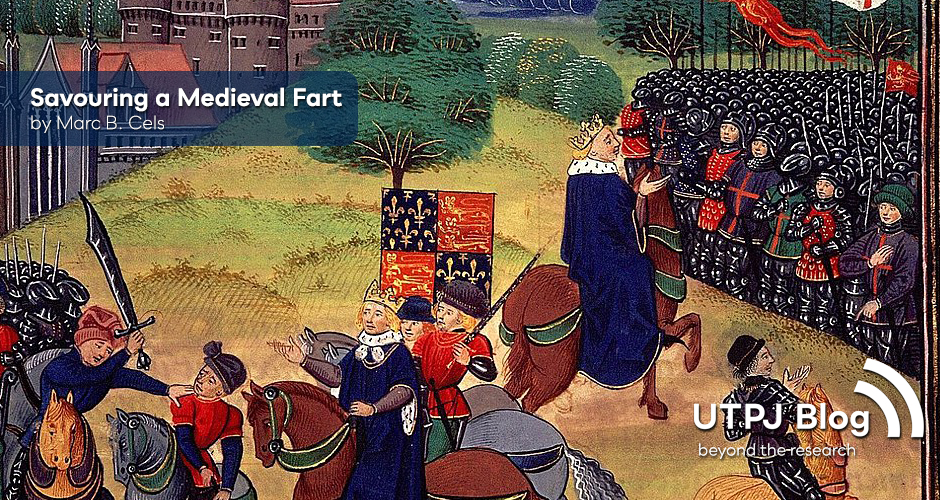
Written by guest blogger Marc Cels.
The Summoner’s Tale, one of The Canterbury Tales by the medieval English poet, Geoffrey Chaucer, revolves around a fart joke. That’s not usually my thing, and I’m not even an English professor; but here it is, my second article about the tale. I’m interested in the history of emotion, both the social scripts for emotions and academic theories about emotions from medieval Christendom. Anger was and continues to be a much-discussed passion, vice, and virtue. That’s why a colleague suggested I offer a fresh appraisal of The Summoner’s Tale. It turns out that there’s a lot of anger between characters from different social stations: a common ‘churl,’ a corrupt clergyman, and gentlefolk. Until relatively recently, few literary scholars deigned to examine this obscene, scatological story. Indeed, a different colleague advised me that it wasn’t worthy of deeper investigation. Still, I caught the scent of something more sophisticated in the tale’s fart. I’ve had to learn from literary scholars who take obscenity seriously. Obscene stories could and can be safe places for raising troubling topics because their absurdity and comedy seems to neutralize their challenge or threat. These tales reveal much about a culture’s tensions. Medieval obscenity concerned sex, scatology, blasphemy, and the inversion of social hierarchies. Chaucer lived in a very angry age, folks were irked at the failures of the clergy and felt God’s wrath through outbreaks of plague. During his day job, the poet was a courtier for England’s highly volatile royalty and nobles and had to clean up the fallout from the Peasants’ Revolt that they had provoked. My article argues that Chaucer raised a stink right under the noses of the people he wanted to challenge. Readers can judge if explaining a joke kills its humour or enhances it.
 MARC B. CELS, Associate Professor, History, Athabasca University teaches ancient and medieval European and Global history at Athabasca University, Alberta. He has written on late medieval anger, forgiveness, and peace-making, and he’s promised a book on the vice of wrath in medieval Europe.
MARC B. CELS, Associate Professor, History, Athabasca University teaches ancient and medieval European and Global history at Athabasca University, Alberta. He has written on late medieval anger, forgiveness, and peace-making, and he’s promised a book on the vice of wrath in medieval Europe.
“Angry as a pissemyre”: Churlish Anger in Chaucer’s The Summoner’s Tale” was published in Florilegium 37 and is Free to Read until November 11th.
Comments on this entry are closed.